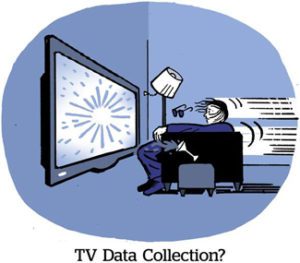Alt measurement providers are raking in the dough.
On Wednesday, iSpot.tv, which recently struck high-profile measurement partnerships with NBCU and WarnerMedia, announced a $325 million investment from Goldman Sachs – a hefty chunk of change considering the company had previously raised a total of $58 million since it was founded in 2012.
That’s a “fairly small amount” relative to other software-as-a-service (SaaS) companies with similar scale, iSpot CEO Sean Muller told AdExchanger. Here’s looking at you, VideoAmp.
ISpot, which Muller said now has $100 million in annual recurring revenue, will use this major influx of capital to revamp and enhance its existing audience measurement and cross-screen TV offering – with a couple of new tricks tossed in.
The company plans to “really step on the gas pedal” of product development, especially as it relates to currency, Muller said. “That’s everything from additional capabilities in products supporting currencies to tighter industry-wide integrations and [securing] MRC accreditation.”
On the currency front, iSpot is looking to combine some of its newer solutions and acquisitions into its core toolkit.
“We bought Tunity earlier this year, so we’re planning to integrate out-of-home [TV] measurement as a central part [of] our products and currency [offerings],” said Muller, who noted that iSpot will also make moves to enhance its attribution and brand impact products as well as its local addressable footprint.
Tunity is one of three acquisitions iSpot has made in the past 16 months, including DRMetrix and Ace Metrix last year. The technology iSpot acquired from Ace Metrix is guiding its efforts in TV attribution.
Ace Metrix is already integrated into iSpot’s media business, but now it’s going to be tied “more tightly with media measurement,” Muller said, so that iSpot is able to better measure brand impact while a campaign is in market, including purchase intent and brand recall.
Attribution is a handy “bolt-on,” he said, because advertisers can use that information to adjust audience guarantees “up or down based on the media’s business impact.”
For example, a campaign looking to deliver on brand awareness might suffice to reach 80% of an audience guarantee. “But if an environment is underdelivering on outcomes, you might need to hit 112% audience delivery to satisfy the guarantee,” Muller said.
Meaning: Attribution can act as a dial to help optimize audience reach depending on where a customer is in the purchase funnel.
For now, audience-based currency and attribution remain separate offerings, and iSpot hasn’t yet considered incorporating its brand impact optimization solutions into its currency offerings.
“From a currency perspective, we’re hyper-focused on audience measurement,” Muller said. “From a marketing perspective, we’re focused on business outcomes and brand impact.”
Beyond product development, iSpot is also aiming to expand its client base.
Today, according to Muller, iSpot has a market share of about 30% among the largest 1,300 advertisers and agencies in the U.S. “We’re just scratching the surface,” Muller said. “We’re looking to capture more market share, [while] also growing our relationships with existing clients.”
The funding from Goldman boosts, but doesn’t dictate, iSpot’s positioning in the alternate currency marathon, Muller said.
“I don’t think fundraising events on their own are what drive a company forward in this race,” he said. “We see this funding as enabling us to continue making our products even better for the industry to transact against.”













